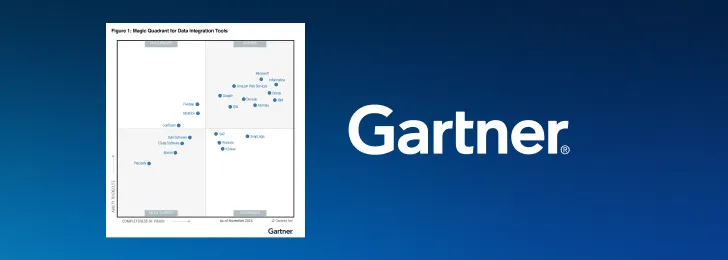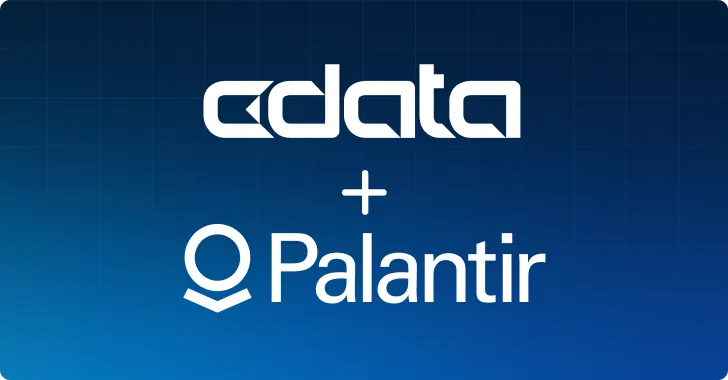
Data powers the world. Governments, enterprises, and small businesses alike depend on data to effectively inform their decisions and run their business. But are they making good use of all their data? Are IT teams able to handle the volume? How do they handle secure information?
A recent CData study surveyed over 550 Operations (Ops) and IT decision-makers at organizations with over 200 employees about their data access pain points. The report dives into what these challenges might mean for modern business, and how data connectivity solutions can provide secure access to organizational data to shed light on vital information for improved decision-making.
Get the report
The study found that as organizations amass greater and more diverse sets of information—usually located in different servers in the cloud and on-premises—IT teams must contend with the ‘tsunami’ of requests for data consumption. Nearly every department needs data of one sort or another to compile into reports, analyze trends, and predict potential future concerns and opportunities. And the IT department is most often tasked with satisfying those needs. This is untenable in the long term, especially for small to midsize companies, where the IT team may have different functions outside of their roles.
The strain hits everyone
More than two-thirds (68%) of IT workers reported that they are overwhelmed by the number of resources they need to use to access the data requested. On top of that, they believe that most of their coworkers are, too. The strain of navigating the sheer volume of applications and systems, navigating a maze of permissions, firewalls, and security processes to get to the data—let alone making it usable and timely—is a real problem with real consequences for the entire organization.
We also learned that nearly one-third of enterprise organizations use more than 100 different applications and systems to manage their data. Each of these systems may have been acquired for a specialized function or data type, then another was purchased for another purpose, and so on. This can lead to a severely disconnected data ecosystem. IT teams are likely to be tasked with integrating, managing, and maintaining these applications, with seemingly no end in sight.
The implications are sobering. With so many apps to work with, integrating them efficiently is likely to be exceedingly difficult. The cost of the applications themselves aside, the amount of time and effort spent on trying to get these applications to work together can be much more expensive than the cost-savings the applications were meant to provide.
Data consumers – those who need to create and analyze reports based on the data generated in these apps – generally don’t have the technical skills glean useful information from raw data.
This lack of data literacy across the organization is a major factor in IT's fatigue. One in four (28%) Ops leaders said that their company does not provide any cross-departmental education, guidelines, or instructions on how to use the data effectively. Even when the data is available, departments often don’t know how to use the tools they have to get the insights they need.
Potentially more problematic is that the data served across this patchwork of applications may not provide the full picture that leaders need to confidently make decisions about their business operations. When data is scattered across literally dozens of applications and platforms, data quality may take a hit, leading to misinformed insights, delayed action, and deteriorating customer experience.
Out with the old
Traditional methods to manage data have become inadequate to meet modern organizational needs. They’re hard to use for non-technical employees, unadaptable to ever-changing analytical needs, and sluggish in handling increasing amounts of data. The IT department becomes the sole provider of information that can be used for analysis and business intelligence.
The result is a downward spiral of inefficiency. IT teams can’t get out from under the flood of data requests, and coworkers in other departments are frustrated by how long it takes to get the data they need. This affects every level of the organization. Departments that depend on fresh data miss out on opportunities to understand their customers, visualize trends, create forecasts, and more because the existing processes are perpetually broken.
IT will always be the anchor of an organization’s data management strategy, but it doesn’t have to be the bottleneck.
Modern data connectivity solutions like data virtualization for the cloud can help streamline processes, eliminating inefficient data integration processes and providing easy-to-use data access for everyone in the org.
In with the new
Data virtualization for the cloud is designed to work with other cloud-based data integration and automation tools, relieving IT teams of the chronic cycle of manual, time-consuming tasks like building custom applications and complex data systems and devising ad-hoc workarounds for new requirements.
Data virtualization for the cloud simplifies data access, integration, and management by creating a unified layer over disparate data sources to provide unified connectivity across hundreds of apps. Data access becomes more manageable, flexibile, and secure. IT gains time and resources back by eliminating patchwork integrations, custom code, and complicated maintenance processes, while Ops pros gain self-service, real-time access to their data for reporting.
This approach can also create a new way of working for the entire organization, revolutionizing how departments collaborate. No more data silos, no more jumping through hoops to get information. Data virtualization for the cloud democratizes access to data without sacrificing security. Departments can gather and compile their own data with little to no technical training to generate reports quickly for truly actionable insights.
Data virtualization for the cloud also tames the costs of managing data. The expenses of storing copies of data for different reports, the additional person-hours taken up by fielding requests are greatly reduced, and self-service data access encourages cross-departmental enablement and collaboration. This frees up IT teams so they can focus on more critical tasks that help to grow your business.
Read the report
Stem the data tide with CData
Save your IT team from the flood of data requests. CData provides solutions to streamline data management, freeing your team to ride the wave of innovation and propel your business forward.
Join the CData Community to ask questions, get answers, and collaborate with people who use CData.
Read the research report
Get insights into the most pressing data access challenges in 2024, and how data connectivity solutions can help.





